- This feature was published in RAIL 890 (October 23-November 5 2019)
Leaving Paddington on May 18, on the last service train to be worked by a High Speed Train from Brunel’s terminus (RAIL 880), there was an air of sadness coupled with an immense sense of pride - pride for an iconic train that had delivered an impressive 43 years’ hard work for passengers travelling from London to the South West and South Wales.
But we all knew it wasn’t the final end of the HST. This wasn’t “goodbye”, more like a “cheerio, see you someplace soon”.
That someplace soon for 54 of GWR’s hard-worked power cars is Scotland. Despite their age, and a spot of ill-informed mainstream media criticism, there is still plenty of life left in the HSTs. After all, their new MTU engines are only a decade or so old.
It is often argued that the HST saved BR’s InterCity market. It was only ever intended as a stopgap, but it proved to be a winner. The word iconic is often overused, but for the HST it is more than appropriate. And with that in mind, many observers believed it was a folly to send these fine trains to the scrapyard.
Someone in Abellio ScotRail’s bid team felt the same, so decided to take 26 sets and run them as nine four-car and 17 five-car trains between Scotland’s major cities. They are marketed as the Inter7City, taking in Edinburgh, Glasgow, Stirling, Dundee, Perth, Aberdeen and Inverness.
When all 26 sets are up and running they will replace newer (but limited, in terms of capacity) Class 170 Turbostar diesel multiple units on the core inter-city services between those cities. The Highland Main Line with an HST will be an enjoyable experience, if journeys with LNER are anything to go by.
However, the old First Great Western set layout was both tired and criticised, especially in Standard Class. And the old slam doors were very dated - especially with the need to pull down a droplight window, get your arm out of the window, fiddle for the handle, and open it (often with two or three attempts if you are elderly or just not used to these doors).
Thus, the ScotRail plan was to totally refurbish the trailer vehicles, with new sliding doors and a host of other improvements.
A combination of much-discussed reasons has sadly put the project to overhaul the coaches, being carried out by Wabtec, behind schedule. On the date of RAIL’s train test in early summer, there were just two sets in traffic. Class 170 (or even ‘158’) substitutions were still part and parcel of the daily service, although availability has since improved.
It begs the question: will this be a costly mistake? I think not, but the proof of the pudding is in a RAIL train test - so armed with stopwatch, measuring tape and notepad, it was time to head north to track one down and test it!
On the day, ScotRail obligingly told us what sets were out and where the refurbished ones were. Better still, the Scottish gen page on Facebook told us all the booked HST turns. The plan was to travel on the new-look train and (if possible) on one of the old FGW sets just for comparison. As luck would have it, the 0928 Edinburgh-Aberdeen was a ‘refurb’ set, and that dropped nicely into a classic set at Dundee for a run back to Glasgow.
Train overview
We arrived at Edinburgh just before 0900. It was pleasing to not only see the ‘new’ train in the station, but also that it was unlocked, enabling us to get to work measuring before the passengers boarded.
Our train was formed of power cars 43130 and 43140 (of 1979 and 1980 vintage respectively) and trailers 40601 (Trailer Miniature Buffet First - TFB), 42004, 42561 and 42046 (all Trailer Standards -TS).
Each Class 43 has an MTU 4000 series engine, fitted in January and October 2007 respectively. The deal with First Great Western and MTU was that the engines would be removed every three-and-a-half to four-and-a-half years depending on hours or condition, and replaced by another (overhauled) unit, so the engines in these locomotives are unlikely to be the same two fitted at rebuilding by Brush 12 years ago.
During those overhauls the locomotives were also rewired, updated, and had any corrosion dealt with. So, while you can’t say they are new by any stretch of the imagination, they are certainly (specification-wise) 40-year-old locomotives that are still fit for purpose. And… passengers don’t tend to worry about the locomotives, provided they work!
The trailer vehicles date from 1976-77. But again, that’s the shells and bogies - the interiors (the bit that bothers the passengers) date from 2018. In that respect, they are ‘new’ in the eyes of their users.
The biggest and most obvious change is the doors. Swapping those dated slam doors to button-operated versions immediately changes the train from old to new.
The same applies to the toilets. Simply the ability to remove those labels that read “do not flush while the train is at a station” (a sticker that dates a train as ‘old’) modernises them no end. It’s all about bringing the passenger experience up to what they expect (and get) from brand new rolling stock.
First Class
We boarded the train a good half-hour before it was ready to leave. Full marks to ScotRail for that - and for not doing that annoying habit of leaving passengers standing on the platform in all weathers for ages, until releasing the central door locking a couple of minutes before departure, causing a scrum to get seats.
However, it is worth mentioning that we got on the empty train and were immediately greeted by a shelf full of snacks. People could simply walk on, fill their bags, and clear off with a fair few quid’s worth of biscuits, flapjacks and drinks!
Interestingly, while you can obviously open the doors from the outside push button, you can’t close them from outside. No big deal - merely an observation. There is a push button inside to close them.
The vestibule doors take about a second to open, but don’t stay open for very long (just a couple of seconds) before they automatically close. These are clearly the old-style automatic doors with a patchy opening. They are also only 60cm wide (a bit tight for someone with luggage) and 192cm high. There is a curve in the door frame at the top, which is quite nice.
There are 32 seats in the First Class coach. That’s because a third of the coach is given over to a small buffet counter. First Class has 2+1 seating. From the front, the layout is two priority seats and a bay of two facing seats opposite two bays of four. Then there are three sets of bays of two and bays of four opposite each other, all obviously with tables. The seat to window match is excellent and there are half-size partition screens between bays.
There are then two more single seats on one side opposite the luggage area, the self-service catering bar, and the train manager’s office. There is a centre partition in the coach, as was the case in the old FGW days. The carpet is a light grey and blueish criss-cross.
The seats are the same type as fitted to the FGW sets. It’s worth remembering that refurbishment of the First Class seats by FGW a few years previously was excellent (if you like leather seats). I assume they have been re-covered in this latest refurbishment.
These seats are 52cm wide, 50cm deep and have a seat back of 80cm. There was 55cm between the two seat edges around a table. There are armrests on both sides and between the seats on the pairs - and all are moveable. The priority seats have one plug and two USB sockets, while the other seats all have one of each.
First Class features curtains throughout, and they are sturdy, dark and block out the light very well. However, the two curtains do not have Velcro, so when they ‘meet’ they have a tendency to open a gap as the train moves, which lets in the light.
Inside 40601 there are two traditional old-school HST bins, one of which is in the vestibule. The seat reservations are also old-school, with labels in the back of seats.
The Public Information System is of the scrolling type detailing that this is the train for… calling at… and the next stop is… There is CCTV in the coach, so anyone planning to pilfer a flapjack may well be seen!
A small buffet/kitchen area is situated in the First Class coach at the end closest to the Standard Class. The range of food is fairly basic, but you can get something hot including paninis, bacon rolls and toasties. There are hot and cold drinks as well, plus wines, spirits and beers.
However (and this is something ScotRail needs to address), one person is expected to man the buffet counter, do the at-seat service in First Class, and take the trolley for a spin into Standard Class. It means that when the latter two jobs are being undertaken, the buffet has to close. I can’t help thinking that’s a bit too much for one person - a second member of staff would be a big help.
The woman on duty on our day was working through to Aberdeen, so at least there was a catering facility for the duration of the journey.
While the buffet counter is wide and good, the aisle around it is very narrow - just 56cm.
Standard Class
Standard Class relies on the majority of seats being airline seats. FGW was widely criticised for the high-capacity refurbishment of its Standard Class coaches a few years back, which rammed in as many seats as possible - up to 84 in a single coach.
ScotRail has 58 seats and one disabled toilet in 42004, and 74 seats in both 42561 and 42046. That gives a total of 206 Standard Class seats to add to the 32 in First Class.
The aisle width in Standard Class is 45cm, and the seats measure 48cm wide and 43cm deep, with a seatback of 83cm. The leg room between two seats around a table is 45cm, and the leg room to a seat back is 20cm.
The tables, which are 65cm off the floor, measure 117cm x 63cm. They have a supporting beam in the middle. The flip-down table is 61cm x 37cm.
Starting in 42004, while there are still a lot of airline seats, it does have eight tables around bays of four seats. These will prove popular on the long journeys, as they offer a fine view of the stunning Scottish scenery.
The luggage racks are 67cm high for the bottom shelf and 52cm deep, with four slats forming the shelf. I’m not a huge fan of these shelves made up of poles - I prefer a full proper shelf so that nothing can get caught when you’re trying to retrieve your luggage.
There are two wheelchair spaces next to the luggage area, with a 38cm x 60cm flip-down table and a plug and USB socket. One of the wheelchair spaces has two flip-down seats for any carers or friends accompanying a disabled passenger. Both spaces have SOS call-for-aid buttons.
The doors between the vestibules take just over three seconds to open, and stay open for nine seconds before closing.
Initially, the disabled toilet was out of service, and we wondered if we would have to make do with merely saying there was good access to it! However, the guard was able to sort out the fault and return it to use, allowing us to have a good nose around.
The door was very slow to close once inside - something I find annoying, but which may be liked by those in a wheelchair, so I will definitely not call it an inconvenience. The door lock was at a good height, and very fit for purpose. There was also an announcement to say the door is locked - it was quite quiet, but blind passengers may take comfort in that.
The disabled toilet also incorporates the mandatory nappy-changing table. Like other trains, it has no strap on it.
I assume this is now the preferred norm, and that there must be some plausible explanation for it - perhaps it is deemed a choking hazard? If so, it seems a bit extreme?
There is a sturdy grab handle to steady oneself while dealing with ‘junior’. Once done, the nappy table flips back very quickly.
There are two SOS call-for-aid buttons in the disabled toilet. The soap and water both worked well, and there are tissues and towels. There is no automatic hand dryer, which is no great loss as I’ve yet to find one that works well on a train - they are either pathetically weak or wildly over-enthusiastic.
There is no window in the disabled toilet, and the lighting is quite dim. There are three fixed handrails and one moveable handrail.
The door takes just under eight seconds to open, and then stays open for a minute. It closes with an audible warning.
Into 42561, and there are two slots for cycle storage in the space created by a toilet having been removed. The door to the saloon opened very quickly and stayed open.
There is a luggage rack on entry which has three portions on it. They are all 88cm wide, 60cm deep, and 79cm, 61cm and 44cm high respectively. Indeed, there is plenty of luggage capacity, especially when you factor in the above-seat racks that run for the length of the coach.
There is also a 33cm-wide slot behind the first pair of priority seats (there are four priority seats in total). Additional space is available between the backs of seats for luggage.
There is no toilet in this coach. Traditional HSTs used to have lavatories at the end of each coach, but ScotRail has opted to reduce the number of toilets per train to just three per four-car HST. That seems inadequate.
For some inconceivable reason, ScotRail has done away with two of the redundant toilets and turned them into cupboards - allegedly for transporting haggis. Personally, I think that’s just a gimmick - wagonload freight by HST is not what these trains are meant to be about.
42046 also has ten tables, with the balance of its 74 seats made up by airline seats. The latter are actually OK, and the legroom is 30cm.
Turning to the Standard Class lavatory, this is quite small and cramped (as they have always been - not only on HSTs, but on just about every train ever to run on the railways in recent times).
There is no window in the Standard Class toilet, which is just 82cm x 120cm in floor area - anyone over 6ft 2in may need to crouch to get in it! The basin is also very small. The water is hand-activated - great when it works, but not when it doesn’t. My years of using train loos with automatic water have taught me to check it works before applying soap - after a few occasions when I squeezed the soap and then found there to be no water, leaving my hands a sticky, soap-covered mess! There is one grab rail, a bin, towels and tissues.
One thing I noticed about these sets is the lack of bin provision. There are none in Coach B (42004), other than in the vestibule, and two in the other vestibule in Coach C (42561) plus the same in Coach D (42046). In First Class there was one below the ‘self-service’ counter and two in the saloon itself. I have a feeling there should be a few more, certainly in the Standard Class saloon areas.
Finally, the train has WiFi throughout, although it was pretty poor on our trip.
Ride and travel experience
Each coach has four doors, one in each corner. A 30cm gap separates the train and the platform, which is more than adequate.
The external doors take 3.5 seconds to open and then 5.6 seconds to close, with an audible warning two seconds before they start closing. When open, there is an 80cm-wide gap and the headroom of the door when open is 188cm.
The ride quality is pure HST - you have a smoother ride than on any underfloor DMU, aided by less intrusive noise. Sitting at the end of the coaches (and thus over the bogies) is obviously that bit bouncier, but in the centre of the trailer cars it’s lovely - and much better than so many new trains such as Voyagers or Class 180s… in fact, anything with those dreaded underfloor engines.
There is room in the power cars to carry bikes, but at present this is not available to passengers, although discussions are ongoing (presumably with the unions) to make this space available. This would be a big plus for passengers. It might be that it is restricted only to those passengers taking a bike from the start to the end of the train’s journey, but would certainly be useful for Edinburgh or Glasgow to Inverness.
The reason for ScotRail not being too keen on people getting bikes on and off at the power car at intermediate stations is the effect on dwell times. And I have to say, that is understandable.
Walking through the train is very good, as are the corridor connection areas. But remember, this is still quality British Rail engineering!
Classic comparison
Arriving early at Dundee, we left 43130/140 to carry on to Aberdeen, while we returned to Stirling on a classic set (the 0942 Aberdeen-Glasgow Queen Street powered by 43168 leading with 43152 trailing). Both power cars were in the new Inter7City livery.
The four trailer vehicles in this set were still in the old FGW-style of layout, and still had slam doors. There’s not a lot to say about these sets. They are still OK (any charter operators taking on HSTs might opt to keep them as they are and they’d be fine), but what they do show - especially in Standard Class - is how much better the refurbished trains are.
They had more toilets, but plug sockets were only available to anyone sitting around a table, of which there are very few in Standard Class. There was only a trolley catering service. The conclusion is that ScotRail can’t get its full fleet of refurbished vehicles soon enough.
RAIL verdict
I have long argued that the age of a train is (in passengers’ eyes) irrelevant if the interiors are well-designed and fit for purpose, and the trains are reliable. That is certainly true of the HSTs.
I recall the Mallard refurbishment of nearly 20 years ago, instigated by GNER. It was a better interior than the Pendolino trains that were then being built new (and remains so to this day). In fact, some of the new inter-city trains such as Voyagers and Meridians were, when introduced, simply not as good for passengers as the refurbished HSTs. I stress refurbished, because those HSTs still using the old BR fixed armrests were awful.
GWR’s refurbishment of its HSTs a while back was stunning in First Class, less so in Standard Class. This refurbishment by Wabtec for ScotRail is something of an understandable compromise in that there are fewer Standard Class seats and more tables and more room, but airline seats have not been done away with altogether. And let’s be honest here, some passengers actually prefer airline seats.
But what ScotRail has now is a superb train that is fit for purpose. Turbostars were OK, certainly one of the best of the late 1990s glut of new designs. But were they really a good travel experience for 180 miles from Glasgow to Inverness?
No, they were not (and I speak from experience). These HSTs offer a much better train for such a journey. They offer less intrusive noise, better saloons, and in First Class a truly wonderful travel experience.
Yes, they have been dogged by delays, especially the trailer vehicles, and there have been inevitable training and teething issues. But when all sets are up and running and working between the seven cities, they will be a welcome boost for passengers - be they business travellers or tourists.
If I were ScotRail management, I’d be looking at the feasibility of taking some more trailer cars to make them five-car sets, and even the possibility of using them on the West Highland, Kyle and Far North lines as well (although I fear that is a cost too far, but food for thought),
The ride south on the classic set showed just how much improved the refurbished vehicles are. And that speaks volume about the versatility of the HST.
These are truly wonderful trains, and with proper internal refurbishment to keep them ahead of the times in terms of passenger expectations, there is no reason why they can’t go on for a good few years yet.
Scorecard (out of 10 per category)
Comfort 9
Ride quality 9
First Class 10
Standard Class 8
Toilets 8
Luggage provision 8
Passenger information 8
Doors 8
Features 9
Build Quality 9
Overall 86/100


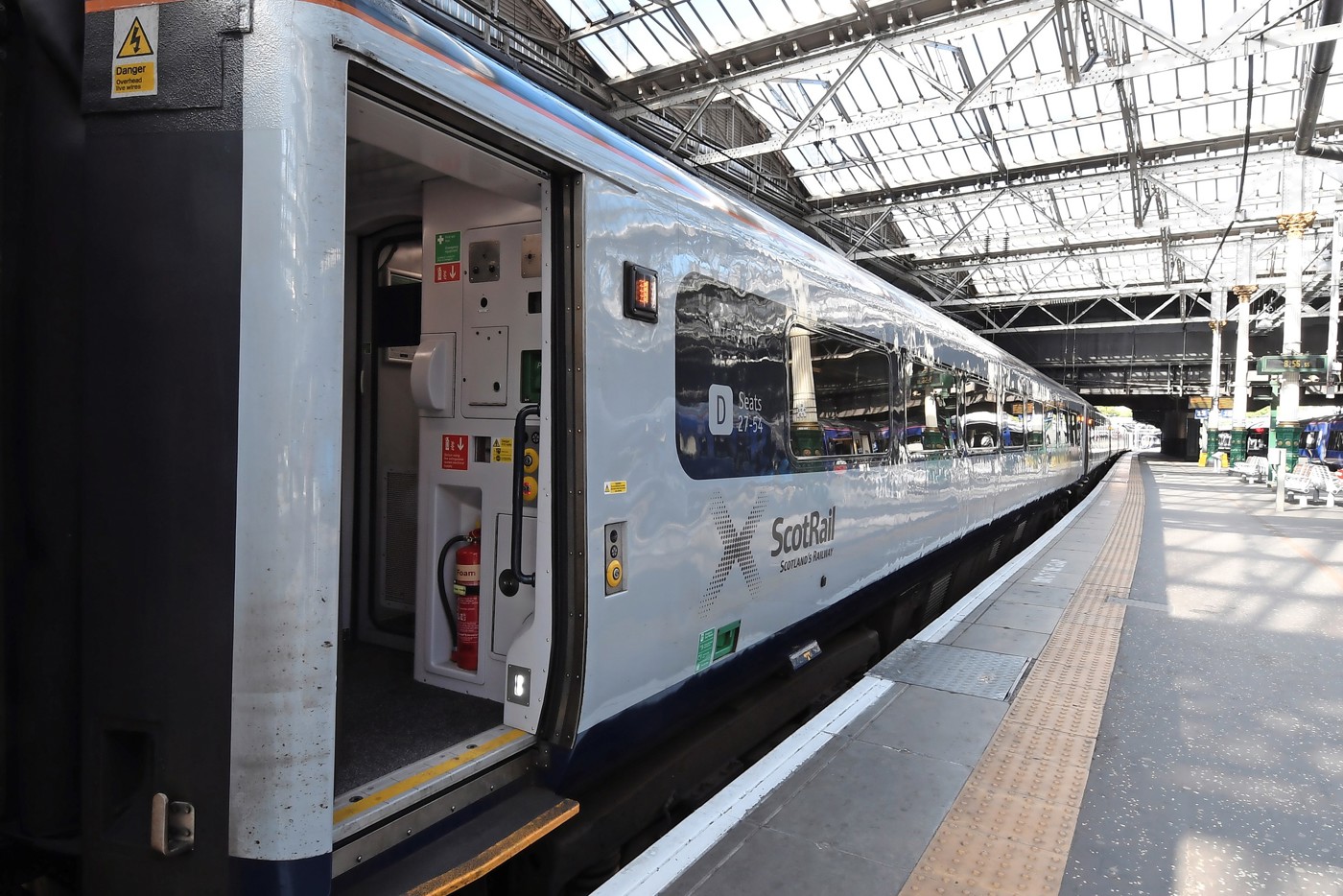
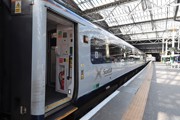
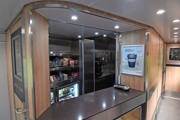
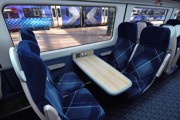
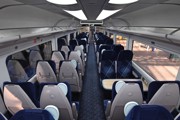
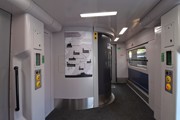
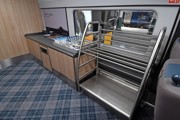
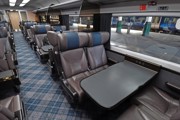

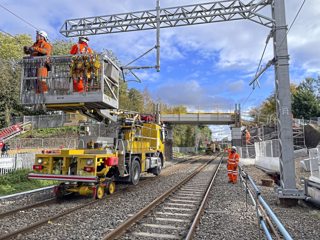
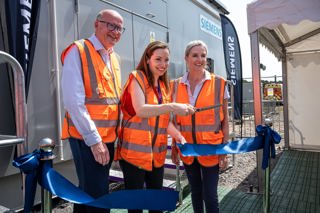
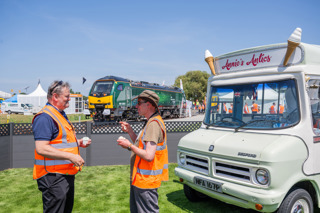
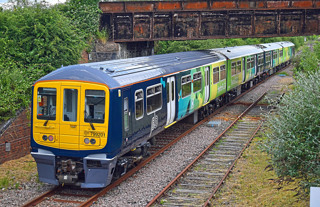











Intercity 125s are Magic - 18/04/2023 10:34
Brilliant! What a superb re-purposeing exercise. The 170s are perfect for the York to Leeds via Harrogate line too. A win for many people.